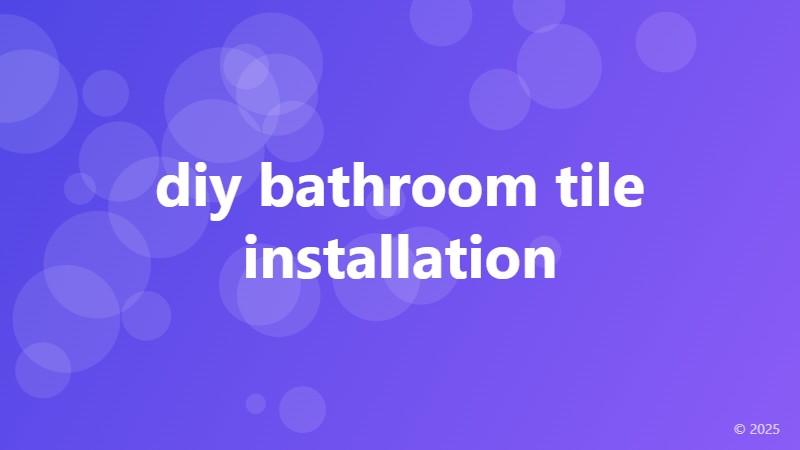diy bathroom tile installation

Getting Started with DIY Bathroom Tile Installation
Are you tired of looking at the same old bathroom tiles every day? Do you want to give your bathroom a fresh new look without breaking the bank? DIY bathroom tile installation is a great way to achieve this. Not only can it save you money, but it can also be a fun and rewarding DIY project. However, before you start, it's essential to know what you're getting yourself into.
Preparing for the Project
Before you begin, make sure you have all the necessary tools and materials. You'll need a tile cutter or a wet saw, a notched trowel, a grout float, a grout sponge, and a sealant. You should also have a clear idea of the design and layout you want to achieve. Measure your bathroom floor and walls to determine the number of tiles you'll need. Don't forget to factor in the spacing between tiles and the cuts you'll need to make around fixtures and edges.
Choosing the Right Tiles
With so many types of tiles available, choosing the right one can be overwhelming. Ceramic, porcelain, and natural stone tiles are popular choices for bathrooms. Consider the style, color, and texture you want to achieve, as well as the durability and maintenance requirements of the tiles. If you're new to DIY projects, it's best to start with ceramic or porcelain tiles, which are easier to install and less expensive than natural stone tiles.
Removing Old Tiles (If Necessary)
If you're replacing old tiles, you'll need to remove them first. This can be a time-consuming and labor-intensive process, but it's essential for a successful installation. Use a hammer and chisel to remove the old tiles, taking care not to damage the underlying surface. Once you've removed the tiles, clean the area thoroughly to remove any adhesive or debris.
Laying the Tiles
This is the most exciting part of the project – seeing your design come to life. Start by applying adhesive to the back of the tile and the wall or floor. Use a notched trowel to spread the adhesive evenly, making sure to hold the trowel at a 45-degree angle. Press the tile firmly into place, using a level to ensure it's straight. Use spacers to maintain even spacing between tiles. Continue laying tiles, working your way outward from the center of the room.
Grouting and Sealing
Once you've laid all the tiles, it's time to grout. Mix the grout according to the manufacturer's instructions and apply it to the gaps between tiles using a grout float. Wipe away any excess grout with a damp sponge. After the grout has dried, apply a sealant to protect the tiles and grout from water damage and stains. Follow the manufacturer's instructions for application and drying times.
Tips and Tricks
DIY bathroom tile installation can be a challenging project, but with the right mindset and preparation, you can achieve professional-looking results. Here are some tips to keep in mind:
- Work in small sections to maintain even spacing and alignment.
- Use a level and a straightedge to ensure straight lines and even surfaces.
- Use a grout sealer to protect the grout from stains and water damage.
- Consider hiring a professional if you're not comfortable with the project or if you're dealing with complex layouts or curved surfaces.
With these tips and a little patience, you can achieve a beautiful, professional-looking bathroom tile installation that will make you proud. So why wait? Get started on your DIY bathroom tile installation project today!